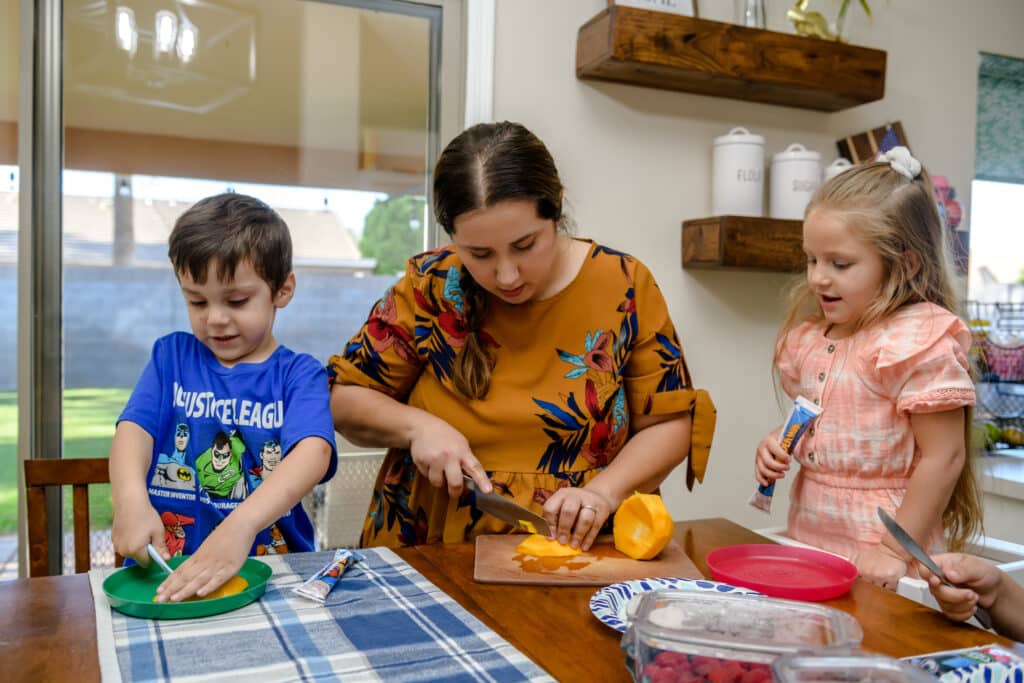No one can argue with the fact that kids need to eat. Yet that’s exactly what’s at stake as Congressional leaders bring our country to the brink, again, having not addressed child care or child nutrition funding and policies.
Efforts to permanently buttress America’s broken child care system have stalled, leaving child care providers—and the millions of families they serve—standing at the cliff’s edge. To prevent this disaster, Home Grown and hundreds of national and state organizations, small business leaders, and child care experts are asking for $16 billion per year in emergency child care funding to avert potential closures of child care programs and to address the ongoing crisis among child care providers; 44% of child care providers are struggling to afford at least one basic need like food, housing or utilities and one in three is going hungry. In order to continue to support our children and families, providers are working extra jobs and even selling their blood to stay afloat.
Clear evidence demonstrates that an infusion of cash over the past three years shored up the often excluded home-based child care sector, enabled providers to increase wages and retain staff, cushioned child care expenses for working parents and, in concert with an expanded Child Tax Credit, reduced the child poverty rate by 46 percent. These investments along with the commitment and dedication of the child care workforce, enabled women to return to the workforce and fuel our economy. Nevertheless, with a government shutdown now looming and multiple crises pounding on their doors, Congress is struggling with such a large funding request.
Still, at Home Grown we celebrate some good news on the table. U.S. Representative Landsman from Ohio and U.S. Representative Bonamici from Oregon have just introduced the Child Care Nutrition Enhancement Act, which would permanently increase the reimbursements from the Child and Adult Care Food Program (CACFP) that child care providers can receive for the healthy snacks and meals they serve daily to children in their care.
Cut away from the halls of Congress to child care provider Tammie Hazlet’s kitchen table in Thetford, Vermont. Every day, Tammie serves breakfast, lunch, and snacks to six hungry (and sometimes picky) infants and toddlers. Today, it’s applesauce from locally grown fruit and peanut butter and cucumber sandwiches the children have helped to prepare. Tammie estimates that the reimbursements she receives from CACFP cover just 30 percent of her food costs. “I shop every Sunday and buy fresh, healthy ingredients based upon my expectations of who will attend that week, but when kids are out sick or parents keep them home, that’s food wasted and I can’t request a reimbursement,” she says.
Now, zoom in on Shalicia Jackson, who’s serving breakfast to a gaggle of 3-year olds, including her own son, in her North Carolina kitchen. A five-star licensed provider with a master’s degree in social work, Shalicia makes about $14 an hour in a typical 10-hour day caring for children. She also participates in CACFP and says, “It doesn’t seem fair that I can’t claim reimbursements for my own son’s meal, because of course you still feed your own child when he’s part of your program!”
Shalicia and Tammie’s kitchen tables, and millions of other kitchen tables across the country where home-based child care providers are serving meals and snacks each day (even when they themselves are food insecure), are where the Child Care and Development Block Grant and the Child and Adult Care Food Program come together. Buying groceries, preparing meals, and feeding children are essential caregiving tasks. CACFP is an essential part of a caregiver’s compensation for that work.
The Child Care Nutrition Enhancement Act may be just the appetizer for the hearty meal of child care funding that’s needed to save America’s economy. Still, it’s an essential first bite that will cushion child care providers like Tammie and Shalicia who, beginning with their October reimbursement checks, will hit the hard reality of rising food costs and lower reimbursements. For the past three years child care stabilization funds have supplemented rates and temporarily reimbursed all providers at the same rate, but these measures expire on September 30, and child care providers are worried. The new CACFP bill includes key provisions that advocates have long requested: a ten-cent increase in reimbursement for each eligible meal; eliminating the harmful, red-tape tangle of “tiering” that discourages many providers from participating in the program; and reimbursements for the provider’s own child’s meals. These changes could be the difference between hungry and healthy (not to mention happy!) for children who get most of their meals while in care.
These common-sense adjustments to CACFP will fortify the budgets of child care providers across the nation and fill the bellies of more than 4 million of kids who eat at child care every day. That’s an affordable and essential first course in the robust, sustained child care funding we need to strengthen the American workforce and support all families.




